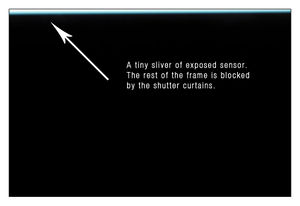Difference between revisions of "HyperSync"
(→FlexTT5 - Flash Connected to P2 Port) |
(→PowerST4) |
||
| Line 116: | Line 116: | ||
===[[PowerST4]]=== | ===[[PowerST4]]=== | ||
| − | * For the most consistent results with Nikon radios, it is highly recommended that you connect your transmitting MiniTT1/FlexTT5 that is on top of your camera to the [[PocketWizard Utility]], navigate to the [[HyperSync/HSS Tab]] and check [[HyperSync/HSS Tab#HyperSync Only (Disable HSS/FP)|"HyperSync Only (Disable HSS/FP)"]] and click "Apply Changes." | + | ''' * For the most consistent results with Nikon radios, it is highly recommended that you connect your transmitting MiniTT1/FlexTT5 that is on top of your camera to the [[PocketWizard Utility]], navigate to the [[HyperSync/HSS Tab]] and check [[HyperSync/HSS Tab#HyperSync Only (Disable HSS/FP)|"HyperSync Only (Disable HSS/FP)"]] and click "Apply Changes."''' |
1. Attach the transmitting MiniTT1 or FlexTT5 to your camera. | 1. Attach the transmitting MiniTT1 or FlexTT5 to your camera. | ||
Revision as of 10:16, 12 June 2013
| Next recommended reading: High Speed Sync |
Contents
| Fast Moving Page! |
|---|
| The information on this page is potentially changing hour by hour or day by day as authors are actively generating content. This could be due to a recently improved feature or announcement, or as the result of a large body of behind-the-scenes work coming to fruition. We appreciate your patience as we work hard to bring the best information to you as quickly as we can. |
This section only talks about HyperSync. Read the section on [Understanding HyperSync and High Speed Sync] to learn more about the difference between HyperSync and High Speed Sync.
HyperSync enables a PocketWizard-connected flash to trigger at a precise moment just *before* the camera triggers a sync pulse. Since you are "triggering faster than a wire" with HyperSync, you can sync at shutter speeds faster than X-sync and get more usable flash energy in your image. HyperSync pushes the boundaries of camera and flash technology to the extreme, and it is limited to the capabilities of the cameras and flashes involved. Some HyperSync results include artifacts like clipping or gradation, and these may or may not suit your style of photography. The combinations of flash, camera, and photographer taste means that each situation is unique.
X-Sync
Here are some examples of the differences between X-Sync and HyperSync using a Canon 5D Mark II and an Elinchrom Ranger RX with an S-head.
Triggering with a flash above X-Sync via a sync cord yields unacceptable results.
Using HyperSync, the flash is triggered at a precisely calculated moment to allow light from the flash to make it to the sensor even though the shutter speed is very fast.
There are two kinds of HyperSync appealing to different styles or needs of photography.
Reduced Clipping
Reduced Clipping uses precision timing to keep hard black bars out of your images. This method may result in a gradation across the image (lighter at the bottom and darker at the top), but for many situations, the results are quite acceptable and useable. Reduced Clipping benefits photographers:
- Shooting outdoors where the sky is a major factor in the top part of the image
- Using aperture priority in conditions that cause the shutter speed to go above X-sync
- In any situation where the full frame must be used and cropping is not an option
Highest Energy
Highest Energy uses precision timing to get as much flash energy into the image as possible above X-sync. This will reduce gradation, but can result in black bars or clipping in the frame. For many photographic situations this can yield acceptable or useful results as clipping can be cropped out of the image. Highest Energy benefits photographers:
- Needing as much action stopping flash power in the image as possible (remember that for HyperSync, longer flash durations are better)
- Gathering images where gradation is not acceptable
- In any situation where cropping is an option
The steps below will get you working with HyperSync quickly for any ControlTL-capable camera.
White Wall vs. Real World
Here are some examples of white wall HyperSync performance for specific camera and flash combinations. More combinations will be coming in the future!
Please note that white wall performance is presented so you can see what is happening in the harshest and most clinical conditions for HyperSync. White wall performance is often not representative of what HyperSync can do for your photography in real-world conditions. We present the white wall images because it is impossible to recreate every real-world situation photographically, nor can every photographer’s level of acceptability be captured scientifically.
| Canon 1D X | Canon 7D | Canon 70D | Canon Rebel T5i (700D) |
| Canon 1D Mark IV | Canon 6D | Canon 60D | Canon Rebel T5 (1200D) |
| Canon 1Ds Mark III | Canon 5D Mark III | Canon 50D | Canon Rebel SL1 (650D) |
| Canon 1D Mark III | Canon 5D Mark II | Canon 40D | Canon Rebel T4i (650D) |
| Canon 1Ds Mark II | Canon 5D | Canon 30D | Canon Rebel T3i (600D) |
| Canon 1D Mark II N | Canon 20D | Canon Rebel T3 (110D) | |
| Canon 1D Mark II | Canon Rebel T2i (550D) | ||
| Canon Rebel T1i (500D) | |||
| Canon Rebel XSi (450D) | |||
| Canon Rebel XTi (400D) | |||
| Canon Rebel XT (350D) | |||
| Canon Rebel XS (1000D) |
| Nikon D4S | Nikon D810 | Nikon D7100 | Nikon Df |
| Nikon D4 | Nikon D800 | Nikon D7000 | |
| Nikon D3x | Nikon D800E | Nikon D5300* | Nikon D90 |
| Nikon D3s | Nikon D700 | Nikon D5200* | Nikon D80 |
| Nikon D3 | Nikon D610 | Nikon D5100* | Nikon D40x* |
| Nikon D2x | Nikon D600 | Nikon D5000* | Nikon D40* |
| Nikon D300s | Nikon D3300* | ||
| Nikon D300 | Nikon D3200* | ||
| Nikon D200 | Nikon D3100* | ||
| Nikon D3000* |
* These cameras do not support HyperSync or HSS/FP-Sync operation: D5300, D5200, D5100, D5000, D3300, D3200, D3100, D3000, D40x, D40
| Don't see your gear? |
|---|
| We have paused our HyperSync testing and PDF production for the time being. We may be adding more results to the wiki as they become available. Check back in the future. |
Configuring HyperSync
Using a transmitting MiniTT1 or FlexTT5 on your camera, follow the instructions below for your specific receiving PocketWizard radio and then take pictures normally.
AC9 AlienBees Adapter
- For the most consistent results with Nikon radios, it is highly recommended that you connect your transmitting MiniTT1/FlexTT5 that is on top of your camera to the PocketWizard Utility, navigate to the HyperSync/HSS Tab and check "HyperSync Only (Disable HSS/FP)" and click "Apply Changes."
1. On the receiving FlexTT5, select the flash connected to the AC9 AlienBees Adapter in the HyperSync/HSS Tab of the PocketWizard Utility in the "AC9 Flash" dropdown menu.
2. Make sure you choose "Reduced Clipping" or "Highest Energy" depending on which method of HyperSync you want to employ.
3. Click "Apply Changes."
4. Attach the transmitting MiniTT1 or FlexTT5 to your camera.
5. Connect the receiving FlexTT5 and AC9 AlienBees Adapter to the flash and take pictures normally.
As of this firmware release, HyperSync Automation is currently implemented for the following Paul C. Buff flashes:
| AlienBees AB400 | White Lightning X800 | Zeus 1250 |
| AlienBees AB800 | White Lightning X1600 | |
| AlienBees AB1600 | White Lightning X3200 | |
| AlienBees ABR800 RingFlash | White Lightning Ultra1200 |
If your flash is connected to an AC9 AlienBees adapter and is not in the list above, try selecting a flash of a similar power level.
PowerMC2
- For the most consistent results with Nikon radios, it is highly recommended that you connect your transmitting MiniTT1/FlexTT5 that is on top of your camera to the PocketWizard Utility, navigate to the HyperSync/HSS Tab and check "HyperSync Only (Disable HSS/FP)" and click "Apply Changes."
1. Attach the transmitting MiniTT1 or FlexTT5 to your camera.
2. Connect the PowerMC2 to the PocketWizard Utility, navigate to the "HyperSync" tab and choose "Reduced Clipping" or "Highest Energy" depending on which method of HyperSync you want to employ.
3. Click "Apply Changes"
4. Connect the receiving PowerMC2 to the flash.
5. Take pictures!
Note that the Einstein E640 Flash is an IGBT-controlled flash, and has an extremely short flash duration once set to anything less than full power. As such, the Einstein will see best HyperSync performance when used at full power.
PowerST4
* For the most consistent results with Nikon radios, it is highly recommended that you connect your transmitting MiniTT1/FlexTT5 that is on top of your camera to the PocketWizard Utility, navigate to the HyperSync/HSS Tab and check "HyperSync Only (Disable HSS/FP)" and click "Apply Changes."
1. Attach the transmitting MiniTT1 or FlexTT5 to your camera.
2. Connect the PowerST4 to the PocketWizard Utility, navigate to the "HyperSync" tab and choose "Reduced Clipping" or "Highest Energy" depending on which method of HyperSync you want to employ.
3. Click on the Misc Tab and select which type of flash head you are using with your pack. You can also select what kind of Elinchrom flash you are using from the "Flash Model" selection.
4. Click "Apply Changes"
5. Connect the receiving PowerST4 to the flash.
6. Take pictures!
At present, HyperSync Automation is currently implemented for the following Elinchrom flashes:
| Elinchrom Flashes | ||
|---|---|---|
| Style 300RX | Digital 1200RX or Digital 2400RX with Digital S Head |
Ranger RX with Ranger S Head |
| Style 600RX | Digital 1200RX or Digital 2400RX with Digital SE Head |
Ranger RX with Ranger A Head |
| Style 1200RX | Digital 1200RX or Digital 2400RX with Mini A Head |
Ranger RX Speed with Ranger S Head |
| Digital 1200RX or Digital 2400RX with Mini S Head |
Ranger RX Speed with Ranger A Head | |
| Digital 1200RX or Digital 2400RX with A3000 Head |
Ranger RX Speed A/s with Ranger S Head | |
| Digital 1200RX or Digital 2400RX with A6000 Head |
Ranger RX Speed A/s with Ranger A Head | |
If your flash is connected to a PowerST4 and is not in the list above, set the remote ControlTL radio to receive on a Standard Channel and configure HyperSync using the HyperSync Transmitter Controls, as described below. Make sure to disable High Speed Sync from the transmitting radio.
FlexTT5 - Flash Connected to P2 Port
* For the most consistent results with Nikon radios, it is highly recommended that you connect your transmitting MiniTT1/FlexTT5 that is on top of your camera to the PocketWizard Utility, navigate to the HyperSync/HSS Tab and check "HyperSync Only (Disable HSS/FP)" and click "Apply Changes."
1. Connect your receiving FlexTT5 that will be attached to the remote flash to the PocketWizard Utility, select the “P2 HyperSync Flash Duration” dropdown menu under the HyperSync/HSS Tab and choose a duration to match the estimated flash duration of your strobe.
2. Connect your receiving FlexTT5 to your flash, and power on the flash, then the FlexTT5.
3. Attach the transmitting MiniTT1 or FlexTT5 to your camera.
4. Take pictures normally.
5. If you're seeing clipping at the bottom of the frame, try repeating step #1 with a different value for best results.
PocketWizard Radio Receiving on a Standard Channel
(Plus II, Plus III, PlusX, MultiMAX, FlexTT5 in Basic Trigger Mode), or internal PocketWizard receiver built in to your flash
1. Connect the transmitting FlexTT5 or MiniTT1 that will be on top of your camera to the PocketWizard Utility.
2. Navigate to the HyperSync/HSS tab, check the HyperSync Only checkbox.
3. Choose a value from the "HyperSync Flash Duration For Standard Channels" drop down menu.
4. Click "Apply Changes"
5. Connect your receiving Plus II, MultiMAX, Plus III, PlusX, or turn on your flash and set the internal PocketWizard receiver to the same Standard Channel as your transmitter.
6. Take pictures as normal!
7. If you're seeing clipping at the bottom of the frame, try repeating step #1 with a different value for best results.




